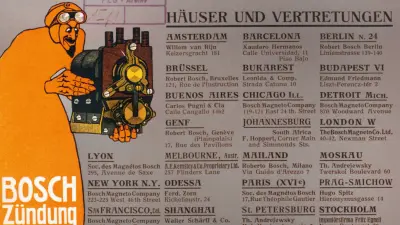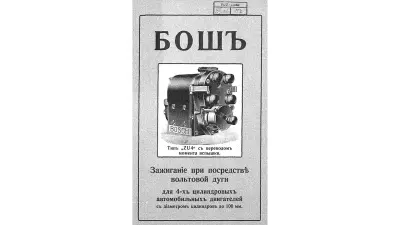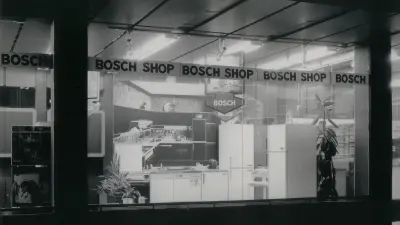Old traditions and new beginnings
Bosch in eastern Europe

The fall of the Iron Curtain at the end of the 20th century did more than simply overturn the political status quo. Within a very short time, a completely different image of the “East” emerged.
After the cold war
Free-market approaches replaced centralized, planned economies, and a series of new states appeared on the political map. “Growth opportunities” and “new horizons” became the mantras of the early 1990s.
Bosch seized the opportunities offered by the eastern European market and its roughly 250 million consumers, and quickly established a presence there.
Looking back

Back and forth
Bosch already had a long tradition in eastern Europe, with the roots of its business activities in the region extending back to the 19th century. In 1899, Bosch engaged the services of Dénes & Friedmann to sell its products in Hungary, among other countries. Further local agency agreements followed, but Bosch also opened its sales offices of its own in eastern European countries, establishing a successful network by the 1920s. Even post-1945, during the Cold War era, Bosch never entirely ceased trading or granting manufacturing licenses there, and when in the early 1990s a whole slew of new regional companies was set up, business in eastern Europe saw a lasting revival.

Liberalization
Since 1969, Bosch had been coordinating its sales and customer service in central and eastern Europe from Vienna in Austria — and it initially continued to do so after 1990 as well. In 1988, following the first signs of economic liberalization in the Soviet Union under Gorbachev, it was from Vienna that a liaison office was set up in Moscow.
In 1990, liaison offices were established in Budapest, Warsaw, and Prague, and in 1991 the Bosch regional company in Austria was given the task of further expanding the regional sales companies in eastern Europe.
Twelve new companies in two years
The new regional sales companies were set up quickly thanks to rapid decision making and the experience gathered from many years of doing business in eastern Europe. In 1992, the liaison offices in Budapest, Warsaw, and Prague were turned into independent regional subsidiaries. In 1993, the offices in Ljubljana, Riga, Kiev, Moscow, Zagreb, Minsk, Sofia, and Bratislava followed suit, and were joined by Bucharest in 1994.
A certain degree of flexibility and the ability to improvise were sometimes called for in the early years of the new Bosch companies. It was not always easy to locate suitable premises and procure the right equipment. Telephone lines had to be installed and office supplies sometimes had to be flown in. Differences in official regulations from country to country caused occasional delays, but the new, highly motivated local associates eventually succeeded in smoothing out the wrinkles.

Paying the spark plugs
One bizarre challenge involved the delivery of 15 metric tons of millet to the spark plug factory in Engels, Russia. During the Soviet era, large industrial enterprises often made up their own microcosms, which meant that the spark plug factory had originally had its own nurseries, schools, apartments, and even a pig farm along with all the corresponding administrative units. There was a dedicated department for barter transactions, a practice that was widespread during the years of currency uncertainty.
The spark plugs that were manufactured and delivered were “paid for” with various products such as gasoline, engines, and automotive spare parts. However, the use of millet as a currency was something new. After some negotiations, the company was finally able to use the cereal to settle a tax obligation with the city authorities.
New companies established
In the meantime, the first wave of new companies in Eastern Europe was already some time ago, and new regional subsidiaries are still springing up. The regional sales companies were quickly followed by the first Bosch manufacturing facilities. These days, all four of Bosch’s business sectors manufacture in eastern European countries, operating state-of-the-art plants in the Czech Republic, Slovenia, Poland, Hungary, Slovakia, Romania, Serbia and Bulgaria.
The ongoing expansion of the company’s activities in this region shows that Bosch continues to believe in eastern Europe’s long-term growth potential. Looking back, it is clear that promptly seizing the emerging growth opportunities and new prospects in this part of the world has more than paid off.
Author: Bettina Simon
